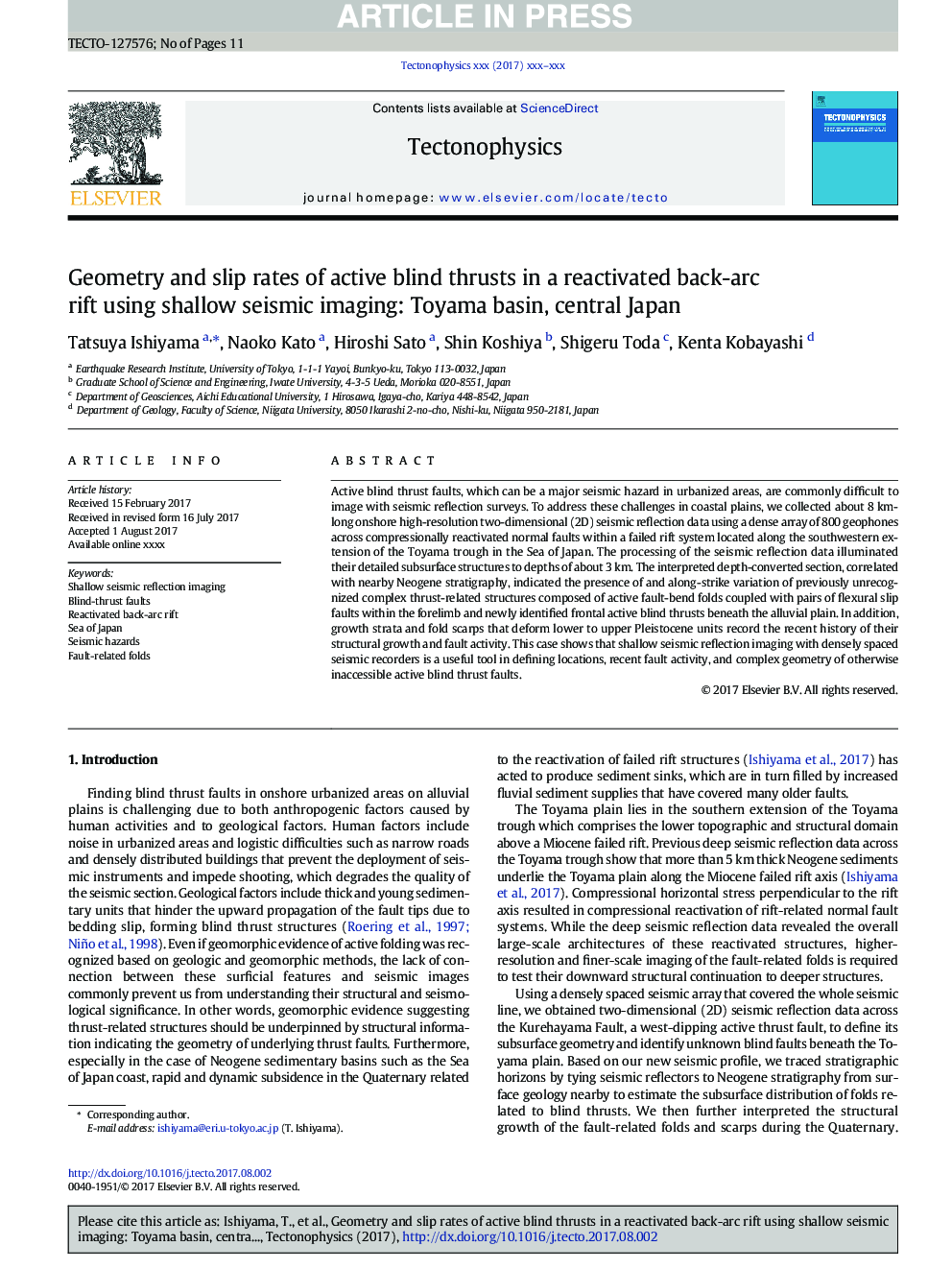| Article ID | Journal | Published Year | Pages | File Type |
|---|---|---|---|---|
| 8908885 | Tectonophysics | 2017 | 11 Pages |
Abstract
Active blind thrust faults, which can be a major seismic hazard in urbanized areas, are commonly difficult to image with seismic reflection surveys. To address these challenges in coastal plains, we collected about 8Â km-long onshore high-resolution two-dimensional (2D) seismic reflection data using a dense array of 800 geophones across compressionally reactivated normal faults within a failed rift system located along the southwestern extension of the Toyama trough in the Sea of Japan. The processing of the seismic reflection data illuminated their detailed subsurface structures to depths of about 3Â km. The interpreted depth-converted section, correlated with nearby Neogene stratigraphy, indicated the presence of and along-strike variation of previously unrecognized complex thrust-related structures composed of active fault-bend folds coupled with pairs of flexural slip faults within the forelimb and newly identified frontal active blind thrusts beneath the alluvial plain. In addition, growth strata and fold scarps that deform lower to upper Pleistocene units record the recent history of their structural growth and fault activity. This case shows that shallow seismic reflection imaging with densely spaced seismic recorders is a useful tool in defining locations, recent fault activity, and complex geometry of otherwise inaccessible active blind thrust faults.
Related Topics
Physical Sciences and Engineering
Earth and Planetary Sciences
Earth-Surface Processes
Authors
Tatsuya Ishiyama, Naoko Kato, Hiroshi Sato, Shin Koshiya, Shigeru Toda, Kenta Kobayashi,
